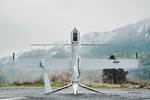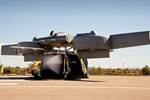AMD receives DASA funding for U.K. unmanned air system competition
AMD will incorporate existing low-cost radar absorbing material technologies to advance autonomous air systems.
Photo Credit: Shutterstock
Nanotechnology company (AMD, Guilford, U.K.) has received U.K. government (DASA) funding within the new “Affordable and Adaptable Unmanned Air Systems” competition.
Funded by the Army Research Innovation and Exploitation Laboratory (ARIEL), a part of the Army’s Futures Directorate, the competition seeks novel, low-cost and adaptable autonomous air system development for the U.K. The challenge for AMD is to use its existing low-cost radar absorbing technologies to help such autonomous air systems survive against evolving counter-air and counter-uncrewed air system threats.
“We are excited to be working within this program offering the U.K. government an opportunity to exploit AMD’s existing radar absorbing technologies that have been developed over the last 5 years,” John Lee, CEO of AMD, says. “We fully expect to be able to demonstrate that AMD materials will, without any other negative impact, provide a significant broadband reduction in the radar cross-section of the platform.”
AMD creates ultra-lightweight, cost-effective and sustainable advanced sensors and electronic devices via its multifunctional materials platform, which can be integrated into coatings, plastics, composites and foams. The company is addressing challenges across multiple sectors, including defense, industrial, consumer and life sciences.
Related Content
-
Ceramic matrix composites: Faster, cheaper, higher temperature
New players proliferate, increasing CMC materials and manufacturing capacity, novel processes and automation to meet demand for higher part volumes and performance.
-
Syensqo composites demonstrate titanium replacement on Boeing MQ-25 Stingray
Validation of integrating Cycom 5250-4HT prepreg into the UAV’s exhaust nozzle structure underpins the material system’s use in other high-temperature aerospace applications.
-
Converting carbon fiber for UHTCMC to 3500°C
Advanced Ceramic Fibers LLC demonstrates ultra-high temperature ceramic matrix composites using SiC and other metallic carbides for applications in aerospace, defense, energy and more.



